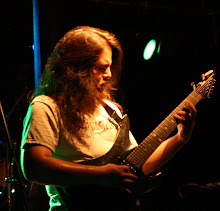This D/A from MCM Electronics (50-7774) is for stereos but uses a nice BurrBrown PCM1716 DAC chip. It sells for a little over $100 but you can get it on sale for cheaper if you wait for a coupon code.
The weakspot is the use of a 4558 dual op-amp. But it does use .1uF ceramic bypass caps and 220uF output caps.
Stock it sounds great! Comparing it to my MOTU 828 mk3 it had slightly less low-end and you lost a bit of detail. I had to actually A/B side by side using my monitor switcher to hear the difference. It was really close.
Really the components look pretty solid stock. Good caps and metal film resistors which I don't commonly see in the stuff I typically mod. It is strange that they skimped on the output chip. So even stock it is a fantastic deal.
To test I used a SM Pro Audio M-Patch 2 (full passive) with my Dynaudio BM5A and Yamaha HS80M's.
After the mod everything was much truer sounding and the instrument separation was much better with more detail. The MOTU was murkier, but maybe more pleasant and warmer. I can't say night and day, but it was noticeable for sure. Listening to MP3's I could hear the MP3 compression in the upper mids which was annoying, but a very good thing for mixing. CD's and mixes I pulled up, I wasn't suprised per se, but I could more clearly hear some of the issues and detail. I am excited to do a mix on these!
So I would say an upgrade for sure. Even at $105 for the converter, then $20 in parts, it is a steal! Even stock, it was a huge upgrade compared my consumer CD Player and DVD player. I may buy another one for my home entertainment system or my computer.
The mod was pretty easy. This was my first time modding SMD so that was a unique challenge. Tweezers, flux, magnifying glass, good light, and .02 or smaller solder make this go a lot easier. There are lots of tutorials online which I found helped a lot. It really wasn't that bad. In some ways I actually enjoyed it more than through hole.
Parts:
- MCM Electronics 50-7774
- 2x Analog Devices AD4898 (Digikey: ADA4898-1YRDZ-ND)
- 2x Panasonic FM Series 470uF 25V caps. You can use Nichicon HE also. You want low ESR. For the Panasonic you want the thinner ones, but they were out of stock, so I went with the fatter ones (Digikey: P12388-ND)
- 2x .1uF 25V or higher Polypropylene Film. MIT brand is good, but really any .1uF will be fine as long as it is Polyester or Polyprop. If you go ceramic for some reason go NP0/C0G. 1% tolerance is great but expensive and hard to find. 10 or 20% is just fine and you can find them all over. I always have a bunch on hand. I think these were Panasonics too, but I often buy Xicon .1 uF 10% from Mouser in semi-bulk since they are small and cheap.
- Brown Dog Adapter 031101A which will allow the 2 AD chips to be used as a dual chip.
On the Gearslutz forum there is talk about upping the power supply to a 13.5 volt one. This is great and the added voltage will add more headroom. Also if it is better regulated that will definitely help. The one that comes with it is a 12 VDC 1.7 Amp switchmode adaptor. Testing it with a DMM shows that it does fluctuate a bit.
The problem is finding a well "Regulated" 13.5 wall wart or power supply without spending $30 or more. At least I couldn't find one. From looking at everything, it looks like you might be able to go even higher depending on the chip specs. If you find one in the US, please let me know!
The best would be to build a custom power supply with a decent transformer and an LM317 regulator. But that is a lot of work and expense. Plus then you are working with mains voltage which is much more dangerous. There is always a fine line with mods as to how much is worth it.
Pictures with Captions
UPDATE: Ok, wow, I just finished up a mix using this D/A and it sounds awesome! I actually started with my MOTU, got about 60% there and then switched and my mix was a mess. I could really tell. So A/B'd for a bit and the difference was clear. The MOTU just sounded vailed and not as clear. Less low-end, muddy, with some weird midrange issues. So that set me back a bit and I started up again. The mix has a few issues still, it was getting late so I bounced it down to listen to in my other environments. I have to say, it is definitely the first time the mix has sounded "better" in the car.
This is documenting my experience with this mod. This is for information and does not imply that you should void your warranty, injure yourself or damage your equipment. Do this at your own risk! I cannot be held liable for any damages or injury.



3 comments:
Thanks for this great rundown on doing the mod. I just created a how-to for this mod at my DIY recording equipment website with a link to your page.
hi could you tell me how the 1/2/3/4 buttons on the front work with the "coax" and "optical" written between them? I am wanting to know if you can switch between two different digital input signals with these buttons because that would be really useful to me. thanks for the review/post I'm sold on having to try this
Yes it switches between the inputs.
I run mine right now to switch between my DAW interface, computer soundcard, and DVD/CD Player.
Post a Comment